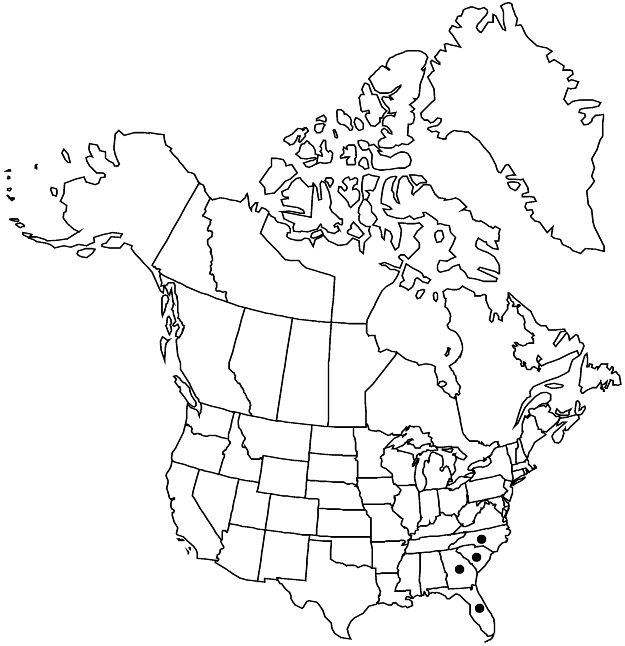Sarracenia minor
Fl. Carol., 153. 1788 ,.
Plants forming dense clumps; rhizomes 1–2 cm diam. Pitchers persistent, appearing well before flowers and continuing in 1 form throughout the summer, erect, green or suffused with red, with prominent, circular, white areolae distally opposite the orifice, usually with flush of reddish pigment in tissue surrounding white, 12–45 (–100) cm, thick, firm, surfaces glabrous or sparsely and unevenly short-pubescent externally, wings 1–3 cm wide; orifice strongly triangular-ovate, 1–3 cm diam., rim red, strongly revolute, without indentation distal to wing; hood strongly convex, arching-recurved adaxially, closely covering orifice, green, flushed bronze-red, or streaked with bronze-red, without white areolae, broadly ovate, not undulate, 1.2–6 cm, ± as long as wide, base continuous with tube, not forming neck, apiculum 1 mm, adaxial surface glabrate or with hairs to 0.5 mm. Phyllodia absent. Scapes 12–55 cm, shorter than longest pitchers; bracts 0.5–1.2 cm, (sometimes alternate within 1 cm of sepals and not appressed to sepals). Flowers odorless or faintly fragrant; sepals yellowish green, 1.5–3.5 × 1.5–3.5 cm; petals yellow, distal portion narrowly obovate, 3–5 × 1–3 cm, margins entire; style disc pale-yellow, 2.5–4.5 cm diam. Capsules 0.8–1.8 cm diam. Seeds 1.1–1.3 mm. 2n = 26.
Phenology: Flowering Mar–May.
Habitat: Moist to wet pine flatwoods and savannas, roadsides through similar habitats, floating peat mats
Elevation: 0-90 m
Distribution

Fla., Ga., N.C., S.C.
Discussion
Sarracenia minor is the most distinctive species of the genus, with its translucent spots and strongly arching hoods. It is clearly identifiable throughout its range on the coastal plain from southeastern North Carolina to Okeechobee County, Florida, and westward to southeastern Georgia and Gulf County, Florida, and may grow in some of the driest as well as wettest habitats for Sarracenia. It is also more tolerant of shade than most species of the genus. Ants are frequently the exclusive prey of S. minor (D. Fish 1976); they climb up the wing to get nectar from the orifice rim, are attracted to the interior by the translucent areolae, and fall into the tube.
Within the boundaries of the Okefenokee National Wildlife Refuge in southeastern Georgia, plants of Sarracenia minor grow on marginal mats of sphagnum along wet ditches and on the floating islands of vegetation in the heart of the swamp. Plants in the Okefenokee Swamp are much larger than normal, form robust clumps with pitchers to 120 cm, tend to flower two weeks later, and have the proximal petiolelike (nonwinged) portions of the pitchers 12–21 (average 17) cm long as compared to the more typical S. minor petioles, which are 3–11 (average 6) cm long. It is not known whether their gigantism is due to genetic or environmental factors, or both. The chromosome number of the Okefenokee plants is the normal 2n = 26, not tetraploid (Mellichamp, pers. obs.). They may be recognized as var. okefenokeensis D. E. Schnell. See D. E. Schnell 2002 for other differences. Such robust specimens are found elsewhere throughout the range of S. minor; there is no pattern that would suggest further taxonomic recognition.
Selected References
None.
Lower Taxa
"not" is not declared as a valid unit of measurement for this property."winged" is not a number."variable" is not a number.